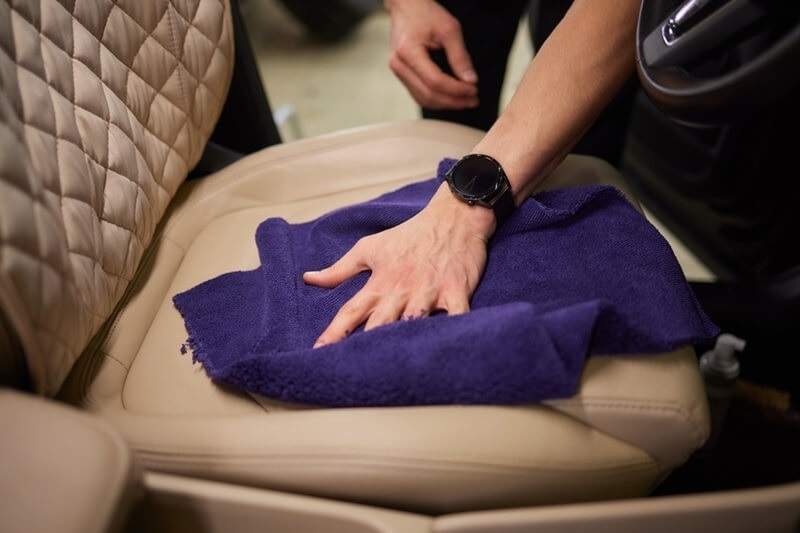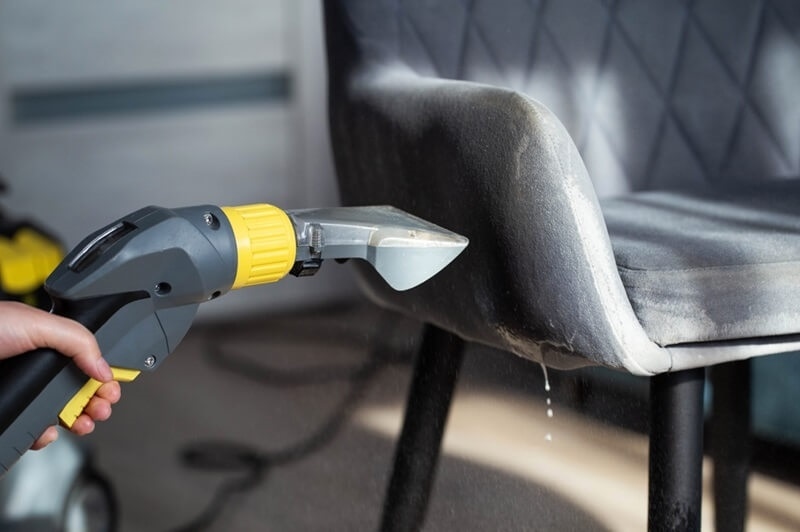
Leather furniture is one of those investments that feels more personal than practical. It’s timeless, smooth to the touch, and it gives a room that cozy, sophisticated vibe no fabric ever can. But it’s also the one thing that makes people nervous to clean. A single wrong move — a harsh cleaner, too much water, or the wrong cloth — and suddenly that soft sheen turns dull.
If you’ve ever stared at your leather sofa wondering if a baby wipe is safe or if you should just leave it alone, you’re not alone. Caring for leather feels intimidating, but it doesn’t have to be. With a few simple tricks, you can keep your couch looking beautiful and soft without hiring a professional or spending a fortune.
Let’s talk about safe cleaning for leather furniture, the kind of care that keeps it looking and feeling luxurious — and lasts for years.
Unlike synthetic materials, leather is alive in a way — it breathes, absorbs, and reacts to its surroundings. It’s skin, after all, and like our own, it needs cleaning and moisture to stay healthy. That’s why your cleaning routine for leather can’t be the same as it is for fabrics.
Most cleaning sprays are loaded with alcohol or strong solvents. They cut through grime, sure, but they also strip away the oils that keep leather supple. Once those natural oils are gone, you’re left with a surface that feels tight, dry, and eventually starts to crack.
So yes, leather can handle life — kids, pets, spilled coffee, the works — but only if you treat it gently.

Not all leather is the same. Some types are delicate and natural, while others are treated with protective finishes. Knowing which one you have makes all the difference.
When in doubt, do a quick test. Dampen a soft cloth slightly and wipe a hidden area. If color comes off, your leather is untreated and needs extra care.
Cleaning leather isn’t complicated — it’s just different. Here’s a simple routine that actually works and keeps your furniture looking its best.
You wouldn’t moisturize dirty skin, right? Same logic here. Use a soft, dry cloth or microfiber towel to gently remove dust and crumbs. If your couch has seams or tufted areas, grab your vacuum’s brush attachment and go over them lightly. It’s amazing how much grime hides in corners.
Here’s where people go overboard. The secret is moderation — less is more. Mix a few drops of baby soap or mild dish detergent with a bowl of warm water. Swish it until it’s just a little foamy.
Dip a clean cloth into it, wring it out until barely damp, and gently wipe the surface. This is the golden rule of leather sofa cleaning — never soak the material. Just a light pass to lift dirt is all you need.
Once you’ve wiped everything down, take another cloth, dip it in plain water, wring it dry, and go over the surface again to remove any soap residue. Soap left behind can make leather sticky or cloudy.
Pat dry with a towel and let it air out naturally.
This step is what keeps leather from aging poorly. Cleaning removes dirt, yes, but it also takes away some of the oils the leather needs to stay soft.
Use a conditioner designed specifically for leather, or make a DIY version with two parts vinegar to one part olive oil. Apply it with a soft cloth, rubbing gently in circular motions. Wait ten minutes, then buff with a dry towel.
You’ll see the shine come back instantly. This is one of the easiest leather care tips that can make your furniture last years longer.
For those who prefer to keep things green, there are a few safe home remedies that work beautifully to clean leather naturally.
The key with any DIY cleaner is to test first. Natural doesn’t always mean gentle for all leathers, especially untreated ones.
If there’s one part of this you should remember, it’s this: avoid anything that sounds like it belongs in a kitchen or a garage.
That means:
Stick to soft cloths and mild ingredients. Leather is strong, but it doesn’t forgive harsh treatment.
Here’s the truth — you don’t need to deep clean often. Once every few months is plenty. What matters more are the small things you do every week.
This is where leather protection home habits come in:
These tiny habits will quietly extend your furniture’s lifespan.
You don’t need to buy every bottle on the shelf to keep your sofa looking good. Affordable leather care can be as simple as:
If your couch gets daily use, rotate cushions every now and then. It prevents uneven wear and helps the material age evenly.
It’s not about perfection — just consistency.
Even with the best habits, spills happen. The key is to act fast but gently.
Here’s how to handle common culprits:
Never panic and start scrubbing — that only pushes the stain deeper. Slow and steady always wins here.
A lot of people clean their leather but forget to condition it, which is like washing your face and skipping moisturizer. Conditioning doesn’t just bring back shine — it restores flexibility.
Well-conditioned leather bends easily and resists cracking. It also feels softer and more inviting, which makes a huge difference if you love lounging on your sofa after a long day.
Think of conditioning as your leather’s version of self-care.
Sometimes, home care isn’t enough — especially if your leather is antique, heavily stained, or peeling. A professional cleaning once a year can revive older pieces and help you avoid expensive replacements.
Pros use pH-balanced products and controlled methods to restore the finish without damaging the material. It’s worth it for the occasional reset.
Here’s the thing — leather furniture ages beautifully when you care for it right. It develops a patina, a softness that tells stories of every lazy Sunday and spilled cup of coffee. That’s what makes it special.
Unlike fabric couches that lose shape and color over time, leather just keeps getting better. But that only happens when it’s cleaned gently and loved often.
A quick leather sofa cleaning session every few months keeps it alive — soft, glossy, and ready for more years of family naps and movie nights.
At the end of the day, safe cleaning for leather furniture isn’t about fancy products or complicated routines. It’s about being mindful — using gentle motions, the right cloth, and giving your furniture the same care you’d give your favorite leather jacket.
If you stick to mild cleaners, natural oils, and regular upkeep, you’ll never have to worry about cracks or dullness again. It’s all about slow, consistent love — the kind that shows over time.
So go ahead. Grab that cloth, mix up your mild soap, and give your leather furniture the attention it deserves. You’ll thank yourself the next time the sunlight hits it just right and that shine looks brand new again.
This content was created by AI